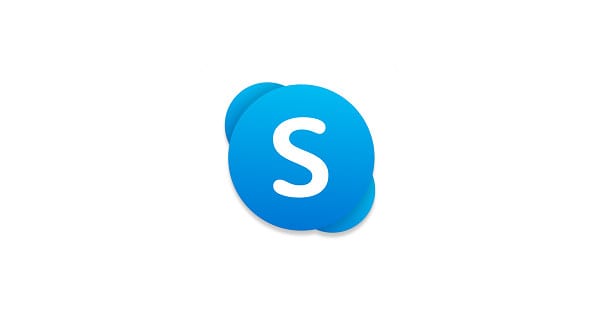Remote working and video conferencing have become critical components of both online and offline enterprises in Novel Coronavirus. While Zoom is unquestionably one of the best tools for real-time video conferencing, many users have recently complained about the video quality and buffering concerns. This is to be anticipated as businesses worldwide operate online, putting a heavy strain on servers. Additionally, there was the issue of Zoom covertly sending data to Facebook. Therefore, there are always adequate alternatives, whether you desire improved video conferencing or despise Zoom’s privacy policies. We’ve compiled a list of the 10 best Zoom alternatives that you should certainly try in this post.
Why Do We Need An Alternative To Zoom?
Because COVID-19 has pushed millions of employees to work from home, the need for a good video conferencing app has increased significantly. Zoom capitalized on this desire by creating a functional and simple solution to use. Another factor contributing to Zoom’s success is the company’s generous free plan. For example, you may conduct free 40-minute conference calls with 100 participants. When all of these variables are considered, Zoom offers an ideal offering. This raises an interesting point. Why are we seeking alternatives to Zoom if it is so good?
On the other hand, Zoom is the quintessential example of a product whose success became its undoing. Zoom’s basic flaws were not found until it was small and not widely embraced. However, as the site gained millions of additional users, the issues became obvious. For example, numerous users noticed that Zoom was sending data to Facebook invisibly. In another instance, the Washington Post discovered that hundreds of personal Zoom recordings were freely available on the web, some even being published on YouTube.
Citizen Lab researchers discovered that certain Zoom calls were routed through China, which is a significant security problem in and of itself. Then there are cases of Zoom bombing, in which hackers join ongoing Zoom calls and disrupt the talks by using profanity, racist insults, and NFSW content. The company’s prospects are dimming due to the disclosure of one security hole after another.
Numerous companies and government institutions have prohibited their employees from using Zoom. Recently, New York City prohibited the use of Zoom in schools, citing security concerns. And if you’re not completely indifferent to your privacy, you, too, should consider Zoom alternatives. Now that you understand why let’s move on to our list.
10 Best Zoom Alternatives
Before we start our list, let us discuss why Zoom became such an instant success and why you should consider its alternatives:
1. Microsoft Teams
If you’re searching for a comprehensive web communication solution like Zoom, I’d argue that Microsoft Teams is the best alternative. It has a slew of features and, in some cases, outperforms Zoom’s capabilities. For example, you can chat with your coworkers, make video calls to them, view Office 365 documents, collaborate in real-time, and call anybody using Teams Calling or the direct Phone System. As I previously stated, it is an extremely strong tool for web communication through video, audio, or chat. However, remember that Microsoft Teams allows you to host a web meeting with up to 250 participants, compared to Zoom’s 1000-person capacity. Nonetheless, Microsoft Teams can host a web seminar with up to 10,000 participants, comparable to Zoom’s capacity. Therefore, if you’re searching for a capable Zoom pick, Microsoft Teams is an excellent alternative.
2. Eyeson
Eyeson is a web-based video collaboration tool that helps you hold video meetings straight from your browser. It complies with GDPR and lets you invite guests using a link – which they may use to join the meeting without downloading to download the software. You may quickly share the link by WhatsApp, email, or any other method of communication. You may start the meeting at any moment using the iOS or Android mobile app. Eyeson’s bandwidth is always 1.5 Mbit/sec to maintain consistent quality regardless of the connection speed. To conserve bandwidth, you may host the meeting in Eco Mode, which disables video and enables you to hear the audio well.
3. Skype
I’m aware that Skype for Business has been phased out favor of Microsoft Teams. That is why I am referring to the free version of Skype for personal use. Nevertheless, Skype may be quite beneficial for small companies since it enables them to conduct web meetings and seminars in HD quality and for free. In terms of participant capacity, Skype supports up to 50 participants, which is half of Zoom’s free tier plan’s 100 participant capacity. However, whereas Skype does not impose a limit on group calls, Zoom imposes one if there are more than three participants. Therefore, I propose that you give Skype a try if you are on Zoom’s Basic subscription.
4. Google Meet
Google Meet is the company’s latest answer to Zoom, and it appears as though the tech giant has finally entered the fray. It is now available only to G Suite users and students participating in the G Suite for Education program. When it comes to features, it’s fairly similar to Zoom in that you can create a meeting and transfer the link with the participants. In addition, people can join the meeting without having an account. And the great part is that, since it’s Google, you get specialized applications for nearly every platform, which is fantastic. Therefore, if you’re seeking a Zoom pick, Google Meet is a viable alternative at the moment. I believe that Google Meet will develop into a comparable rival to Zoom.
5. RingCentral
RingCentral is a communications and collaboration platform that lets you host online meetings with up to 500 participants simultaneously. Without downloading the app, you may join meetings straight from your browser. It enables seamless transitions between audio and video calls and device swaps during the meeting. RingCentral now integrates with Microsoft Outlook, allowing you to arrange and update meetings with a single click. In addition, you may sync it with iCal Google Calendar and send invitations by email or text message from your devices. Apart from calendar apps, it also integrates with popular CRMs, such as Zendesk, Salesforce, and others.
6. Jitsi Meet
If you’re searching for a free alternative to Zoom, the best option is Jitsi Meet. It’s a free and open-source video conferencing platform that allows you to host group calls with as many users as possible. In addition, it is encrypted, does not require an account, and has no time limit. That is fantastic, but what is the catch? To be candid, there is no catch. Jitsi is entirely self-funded by the 8×8 companies that utilize its products, such as Virtual Office and other open-source initiatives. Therefore, if you’re looking for a free solution to Zoom without sacrificing security, Jitisi Meet is an excellent choice.
7. Cisco Webex
Consider Cisco Webex, similar to Zoom and Microsoft Teams, as another comprehensive solution. It’s loaded with features and is geared for businesses and large-scale companies. However, if you are a tiny company, you can utilize its free plan. It enables you to host a free Webex meeting with up to 100 participants without requiring attendees to create an account, which is fantastic. Similar to Zoom’s Basic Plan, this plan includes HD video, screen sharing, and a password-protected personal space. Cisco Webex, similar to Zoom, has a 40-minute time limit. If you upgrade to a subscription plan, you’ll be able to host up to 200 participants on group calls.
8. GoToMeeting
GoToMeeting is one of the most established video conferencing platforms available, and it is brimming with features. Although the company primarily serves corporate clients, GoToMeeting has you covered even if you are a small company. To begin, you may host video and audio meetings from virtually any device and location. And the best part is that GoToMeeting allows video conferencing for up to 250 participants and webinars for up to 1000 people. Apart from that, GoToMeeting has a direct call, cloud recording, an Office 365 plugin for seamless integration of your Office documents, and screen sharing. GoToMeeting is a comprehensive web communication service that you can trust over Zoom.
9. BlueJeans
Bluejeans is another excellent Zoom alternative worth considering. Similar to Zoom, it provides video conferencing, private rooms, events, and a slew of other innovative features. For example, BlueJeans’ Cloud Video Interop technology enables access to Microsoft Teams Meetings from BlueJeans. That’s quite awesome. You may also collaborate through audio and video on any device in real-time. The best part of BlueJeans is that it increases your productivity by emphasizing meetings, making transcriptions, and setting up automated notifications, among other things. On the UI/UX front, it’s fairly comparable to Zoom.
10. Zoho Meeting
Zoho is well-known for its online office suite, and the company has developed some of the industry’s best tools for account management, word processing, and, of course, web conferencing. It’s a one-stop shop for scheduling meetings, creating papers, inviting participants, and discussing the project in real-time. Another excellent advantage of Zoho Meeting is its total web-based nature. While apps provide many features, you may still join calls and web conferences via a browser without installing an app. That is incredible. In terms of capacity, Zoho Meeting supports up to 100 participants at a time, which is much less than Zoom but adequate for a small team.
The Bottom Line: Zoom Alternatives
That concludes our list of the best Zoom alternatives available right now. As we scrolled down the list, some companies offer a fully-featured video conferencing tool, while others offer a limited number of features. However, you may pick a tool from the list based on your requirements and company size. I am fairly certain you will not be disappointed. That concludes our contribution. If we overlooked your preferred Zoom alternative, please notify us in the comment area below.


















